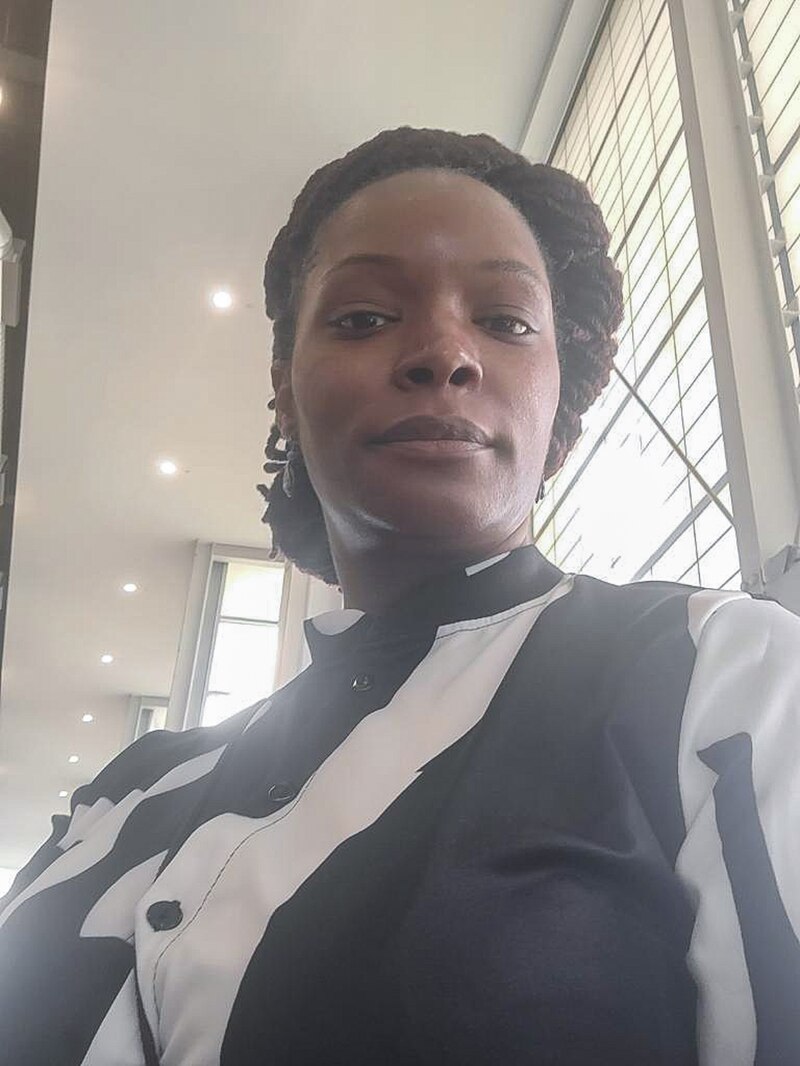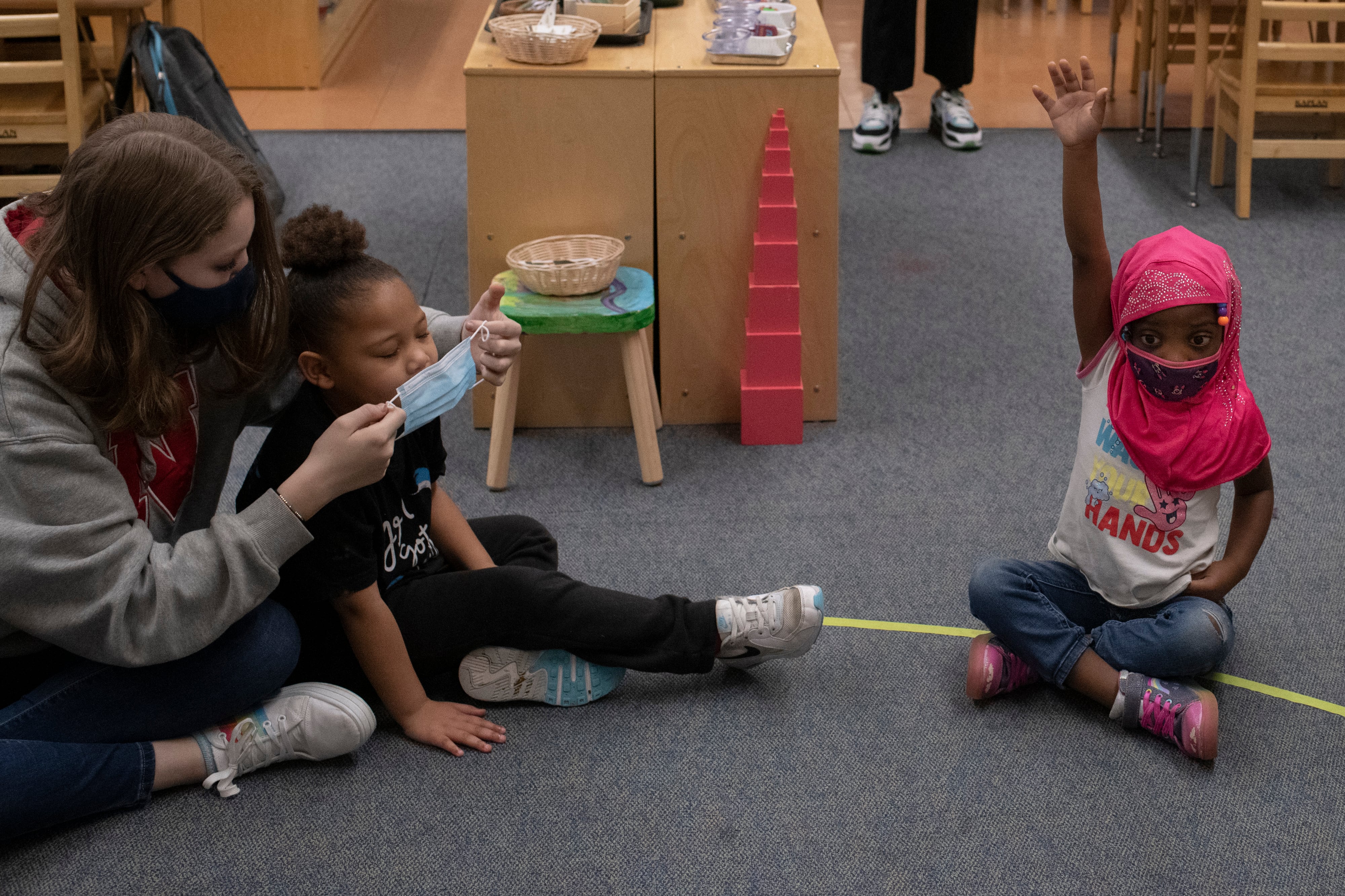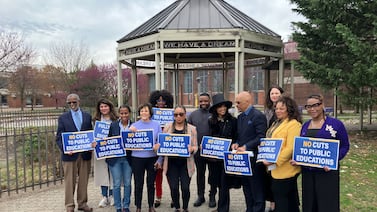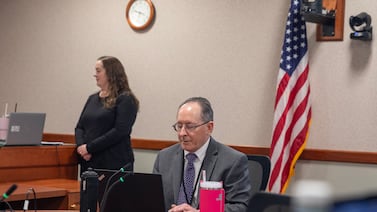When Chicago classroom assistants take time off or quit, Stekeena Rollins steps in to fill a crucial void.
She guides students with disabilities through lessons. She helps them eat lunch and go to the bathroom. And she “puts out little fires” amid an uptick in disruptive behaviors, sometimes feeling like a one-woman trauma team.
During a school year marked by unprecedented support staff shortages, Rollins has been in high demand.
This school year has trained a spotlight on a dearth of substitute teachers in Chicago and beyond. But the district’s special education classroom assistant, or SECA, substitute pool has also been stretched thin — even as the city hired more than 140 support staff substitutes last fall, growing that pool by more than 20%.
SECAs, who help students with disabilities with academics, behavior, and basic needs, have played a key role in navigating COVID’s disruption, helping schools forge and shore up student connections tested by surges and quarantines.
According to data obtained by Chalkbeat Chicago, the district was able to fulfill slightly more than a quarter of almost 80,000 requests for a support staff sub so far this school year, compared with 68.5% of requests for substitute teachers. As with educator subs, data shows wide disparities in the rates of filled requests.
The staffing shortages and heightened student academic and mental health needs have brought renewed recognition of the key roles school support staff plays — and the importance of lining up backup.
At one Chicago school, a blind student skipped lunch because he didn’t know what was on the menu and put off drinking water to avoid bathroom trips when his SECA wasn’t around. At Englewood’s Perkins Bass Elementary, special education teacher Adriana Gonzalez has seen classroom teachers trying to double as aides, standing by a student with disabilities to offer support even as they are teaching a lesson to the entire classroom.
“SECAs are an integral part of the school community,” said Gonzalez. “You can definitely feel a shift when they are absent.”
Amid increasingly stressful work and relatively low pay, many paraprofessionals and other school support staff members have been swept up in the Great Resignation, said Ritu Chopra, the executive director of the Paraprofessional Research and Resource Center at the University of Colorado Denver. Chicago Public Schools has almost 440 SECA and bus aide vacancies this month, compared with 250 around the same time in 2019, according to the SEIU Local 73, the union that represents both full-time and substitute SECAs and bus aides in the district.
Many school districts, including larger urban districts such as Detroit Public Schools, don’t even have support staff substitute pools.
“I am hearing more about paraeducator shortages than ever before,” Chopra said. “In some cases, they get paid more at a fast food restaurant, and it’s less stress for them.”
SECAs pick schools that communicate student needs clearly
Rollins, the substitute SECA, says schools desperate for substitutes have courted her like never before: She gets more phone calls directly from principals trying to enlist her. Teachers praise her work and ask if they can get her a coffee or a bite to eat.

“I need to clone myself 10 more times because I get so many requests,” said Rollins, who subs in Chicago and neighboring Evanston. “It’s almost like a bidding war.”
Support staff vacancies and attrition have bedeviled Chicago Public Schools for years, but this year, the number of SECA vacancies are “a glaring concern,” said SEIU Local 73 executive vice president Stacia Scott.
Some students with disabilities are entitled to one-to-one or part-time SECA support under their Individualized Education Programs, the binding documents outlining their needs. Scott says she has seen more robust efforts — in some cases in tandem with the union — to recruit and quickly onboard custodians and crossing guards.
“I’m not sure why there hasn’t been the same full-court press when it comes to SECAs and bus aides,” she said.
While the fill rates for substitute SECA requests have been low across the board this school year at about 23% on average, some schools have done much better than others, a data analysis by Chalkbeat shows.
About 45 of the district’s roughly 500 schools had none of their requests for SECA subs fulfilled. On the flipside, almost 20 schools had fill rates of 70% or more. The Blair Early Childhood Center on the Southwest Side got coverage all 94 times it requested support staff subs.
Substitute teacher coverage data shows that schools in some North Side neighborhoods tend to draw those educators at much higher rates than high-needs campuses on the South and West sides. But the picture is more mixed when it comes to support staff subs. The neighborhoods with highest fill rates for SECA and other subs are largely on the South and Southwest Sides, including Oakland, South Deering, Riverdale, and Roseland.
Scott and SECA subs who spoke with Chalkbeat suggested that more of these substitutes live in South and West side neighborhoods and seek out opportunities to fill in close to home. Areas that are harder to reach by public transit, such as O’Hare, might be at a particular disadvantage.
Ciere Fisher started working as a substitute SECA in 2014 while she was attending community college and weighing a teaching career. She later joined the district as a full-time SECA but returned to subbing as she pursues a graduate degree in occupational therapy. She says she subbed at a handful of nearby schools when she lived on the West Sides. Now in Lakeview on the North Side, she again stays largely close to home.
But she also says that some campuses do a better job of helping substitute SECAs navigate the tough job of parachuting in to serve students with high needs in unfamiliar environments.
Following advocacy from the support staff union, full-time SECAs are expected to leave information on students’ needs, schedules, likes, and dislikes for their substitutes in the district’s system. But only some schools, such as Hawthorne Scholastic Academy, where Fisher works regularly, have fully embraced that practice.
In other cases this school year, Fisher says, teachers are surprised when she shows up in their classrooms — occasionally saying they didn’t even know the district had substitute SECAs. And during a hectic school year, no one has the time to explain what she needs to do and how she can be most helpful.
She’s had some overwhelming days, stepping in to cover absences or vacancies in several different classrooms on the same day and covering lunch duty.
“It’s kind of like being thrown to the wolves,” she said. “I end up feeling like I’m not being that helpful, and I’m just a body in a room.”
Rollins also says she also gravitates toward schools that communicate clearly about student needs. Because of a shoulder injury, she often can’t serve students who need to be lifted onto wheelchairs or changing tables during the day — and it’s frustrating to show up at a school only to find out she’s not a fit for their needs.
Schools in Chicago tend to be better about providing that information than Evanston, said Rollins, who also substitute teaches in that district. At $24 an hour for sub SECAs, the pay in Chicago is better.
Chicago has stepped up effort to hire substitute paraprofessionals
The district says it has stepped up efforts to recruit and retain both substitute teachers and paraprofessionals this school year. It touts monthly job fairs, a redesigned sub recruitment website, and a social media campaign to highlight the flexibility and rewards of these jobs.
The district hired more than 140 substitute SECAs in October and November alone to address support staff vacancies, increasing that pool to 430 people, from 350 on the cusp of the pandemic.
The district also offered a daily pay incentive at the height of the omicron surge in January. SEIU’s Scott says the COVID spikes and delays in contact tracing earlier this year affected sub coverage: “The fear level is very high among our subs because of how transient they are.”
Nationally, districts are paying closer attention to support staff recruitment and retention, and in some cases trying to expand their substitute pools. The 820,000-student New York City school district now has 10,000 paraprofessional substitutes, up more than 3,000 since before the pandemic, according to the United Federation of Teachers, the district’s educator union, which also represents para subs. That district requires full-time paras to serve in that substitute pool first; it pays a daily rate of $166.67.
In Chicago, mental health and behavioral concerns have dominated calls to Equip for Equality’s hotline, but staff attorney Luiza Quental says the nonprofit that provides legal services and advocacy for people with disabilities has also heard from families who say their children are entitled to a SECA — but it doesn’t seem one is there, at least not consistently. Being able to line up backup for those crucial positions is key, she said.
“Some kids really can’t be without a para,” she said. “The day the para doesn’t come, families don’t send them to school or pick them up early.”
Angelina Landaverde, one of the nonprofit’s clients, has a fourth-grade son who is blind and shares a SECA with other students. She says the boy has had four different SECAs so far this school year, and she keeps hearing from him about stretches when he isn’t getting much help.
The family is pushing for more support in hopes of seeing faster gains in his reading and writing skills. Landaverde said her son didn’t eat lunch sometimes and avoided drinking water because he didn’t want to impose on friends to help him with meals and bathroom trips.
“Those are not jobs for his friends,” Landaverde said in Spanish. “That’s where a paraprofessional comes in.”
Gonzalez, the Englewood teacher, says she has definitely felt the shortage of backup SECAs this school year. In a self-contained classroom where she works with students with disabilities, missing a SECA for the day means that she struggles to accommodate students who need to take a break from the classroom during the school day.
Gonzalez took part in a recently released survey by Educators for Excellence Chicago, in which 83% of teachers polled said special education support staff shortages have challenged their school this year.
Some Chicago principals say in a school year filled with staffing and other challenges, finding support staff backup can seem like a lesser worry.
But, as one principal who spoke with Chalkbeat anonymously because he was not authorized by the district put it:
“If you can’t find a SECA sub, how do you supervise lunch and recess? How do you provide attention and care to students with extreme behavioral and other needs? For families and for classroom teachers, it’s a big deal.”
Mila Koumpilova is Chalkbeat Chicago’s senior reporter covering Chicago Public Schools. Contact Mila at mkoumpilova@chalkbeat.org.





